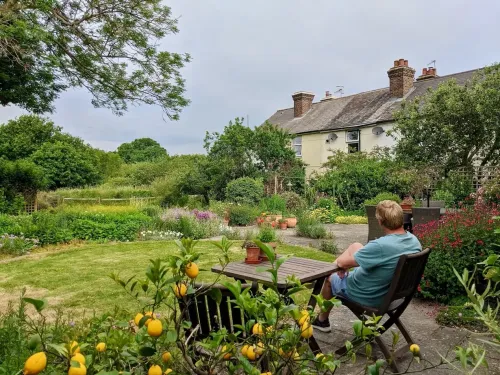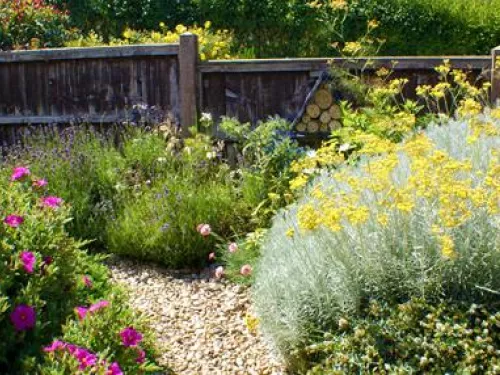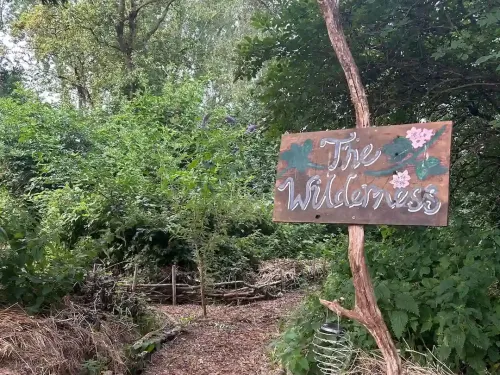
How to create a garden for people and wildlife
Volunteer Wild About Gardens Advisor Penny Brook takes us on a journey through her garden to share how they create a flower-filled haven for both people to relax and wildlife to flourish.

Having discovered our first orchid, we didn’t mow that part of the lawn again until August. We were rewarded with five flowering spikes of common spotted orchid in that first year of our mini-meadow. In subsequent years we enlarged the uncut area of lawn and left the edge of our wildlife pond uncut. By trial and error, we have worked out a mowing regime that seems to work for us. Weather and ground conditions permitting, we cut the mini-meadow in February to tidy it up and prevent it from being overcome by grass that has grown during mild spells in the autumn and winter. The next cut is in late August; we leave the cuttings to dry to let ripe seed release into the meadow. We later remove the cuttings to avoid an increase in soil fertility which would be detrimental to the meadow flowers.
We planted yellow rattle which, being parasitic on grass roots, reduces its vigour and makes more room for wildflowers. Yellow rattle can be tricky to germinate but we were finally successful when we scuffed a bare patch in the grass and sowed some seed in autumn. Once established, it self-seeded very well.
At first, we waited to see which plants were already there, waiting for an opportunity, and found the common spotted orchids, self-heal, buttercups and the amazingly delicate grass vetchling. Some plants moved in from other parts of the garden, including ragged robin, snake’s head fritillary and meadow cranesbill. We have also tried to increase diversity by introducing wildflowers, such as knapweed as small plants. A number of specialist nurseries supply wildflower plants.
One of the joys of a mini-meadow is that it develops over time and every year is different. There are lovely surprises, such as our first common spotted orchid, which has now increased to about forty flowering spikes. Other surprises are less welcome, such as the influx of plantains. In a garden environment we can’t manage the meadow through grazing animals so we will take action ourselves if necessary and remove some of these less welcome plant species. Foxes and badgers can also get up to mischief in our mini-meadow – they often dig up the small plants we have lovingly installed! After the second cut in August, it can take a while for the mini-meadow stubble to be restored to green grass, but we consider this a small price to pay for the interest and beauty we experience throughout spring and summer. In May the bottom of the garden sparkles with buttercups and in June it is dotted with common spotted orchids.
If you are inspired to develop a mini-meadow in your garden, you can find practical tips on Kent Wildlife Trust's website.

Volunteer Wild About Gardens Advisor Penny Brook takes us on a journey through her garden to share how they create a flower-filled haven for both people to relax and wildlife to flourish.

Wild About Gardens Officer Ellen Tout shares how we can all turn our gardens into wildlife havens with these top tips.

This blog about garden wilding is written by Sally Edge, the owner/founder of Langdon Court, where we will host an open garden for the third time in 2025!